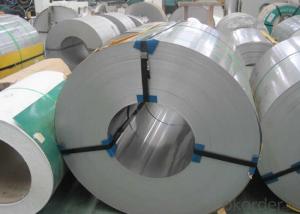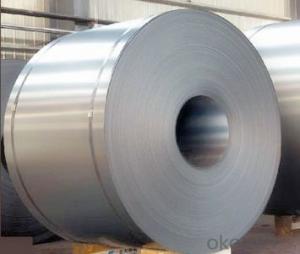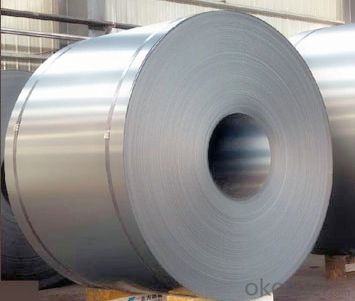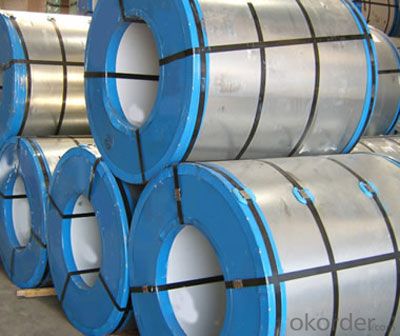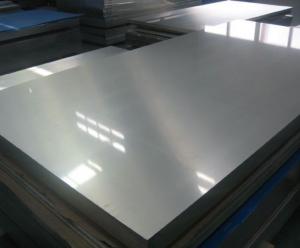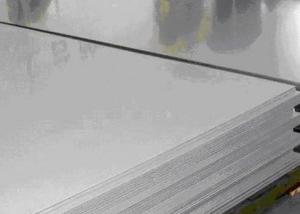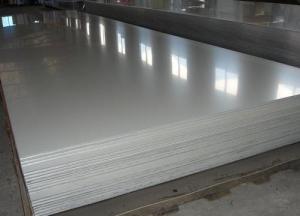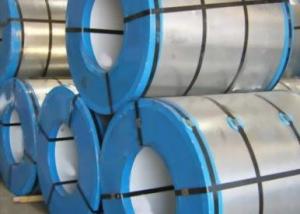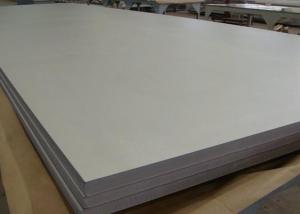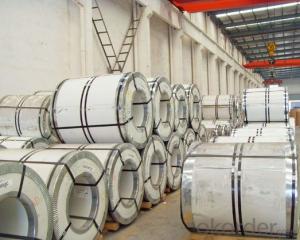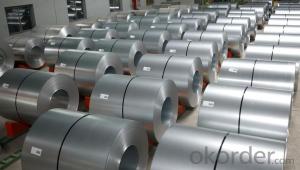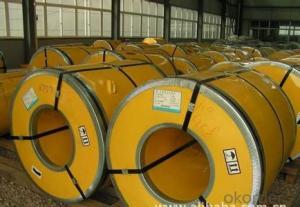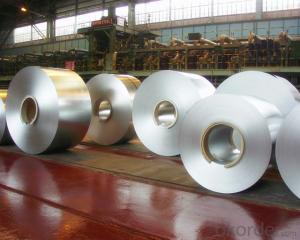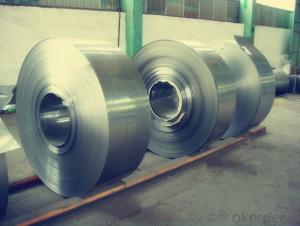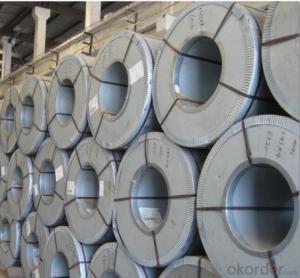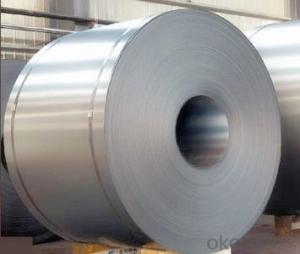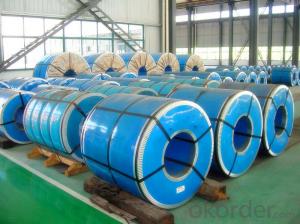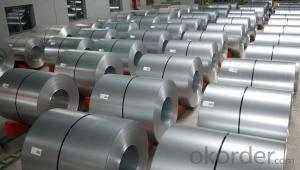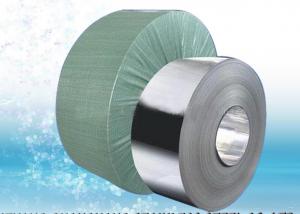Stainless Steel Coil Hot / Cold Rolled 201 Process
- Loading Port:
- Lianyungang
- Payment Terms:
- TT OR LC
- Min Order Qty:
- 400 m.t.
- Supply Capability:
- 5000 m.t./month
OKorder Service Pledge
OKorder Financial Service
You Might Also Like
Hot Rolled Stainless Steel Coil 201 Narrow Strip No.1 Finish
Packaging Detail: For customer's requirement
Delivery Detail: 10-30days
THK:2.3/2.5/3.0/4.0mm
Width:485/510/550/610/1010/1240mm
Face:No.1
201 Hot rolled stainless steel Coil Application
Stainless steel is a production which not easy rust,acid resistance and corrosion resistance,so it is widely
used in light industry,heavy industry,daily necessities and the decoration industry.
201 hot rolled stainless steel coil, use to produce cold rolled stainless steel coil and stainless steel tube, pipe.
201 Hot Stainless Steel Coil Chemical Composition(WT%)
(C):≤0.15, (Si):≤0.75, (Mn):5.5~7.50, (Cr):16.0~18.0, (N):≤0.25, (Ni):3.50~5.50, (P):≤0.060, (S):≤0.030
201 Hot Rolled Stainless Steel Coil
Strength Of Extension:100,000 To 180,000 Psi;
Yield Strength:50,000 To 150,000 Psi
Elongation :55 To 60%;
Modulus Of Elasticity:29,000,000 Psi;
Density :.280lbs/Cubic Inch(7.93g/Cm3)
- Q: Can stainless steel strips be used for architectural canopies?
- Yes, stainless steel strips can be used for architectural canopies. Stainless steel is known for its durability, strength, and resistance to corrosion, making it a popular choice for architectural applications. The strips can be shaped and fabricated to create unique and visually appealing canopies that offer protection from the elements while maintaining a sleek and modern aesthetic.
- Q: Can stainless steel strips be used in the manufacturing of kitchen appliances?
- Yes, stainless steel strips can be used in the manufacturing of kitchen appliances. Stainless steel is a popular choice for kitchen appliances due to its durability, resistance to corrosion, and ease of cleaning. Stainless steel strips can be utilized to create various components and surfaces in kitchen appliances, ensuring a sleek and modern look while providing excellent functionality.
- Q: How do stainless steel strips perform in acidic environments?
- Stainless steel strips are highly resistant to corrosion in acidic environments due to the presence of chromium in its composition, which forms a protective oxide layer. This layer prevents the steel from reacting with acids, ensuring excellent performance and durability even in highly acidic conditions.
- Q: Are stainless steel strips resistant to erosion?
- Yes, stainless steel strips are highly resistant to erosion.
- Q: Is there any magnetism in stainless steel?
- Iron and steel are different in terms of carbon content. An iron carbon alloy with a carbon content of less than 2% is a steel, and a carbon content of more than 2% is called iron. Steel is widely used because of its toughness, elasticity and rigidity. Life is exposed to steel, but people call different. For stainless steel, whether or not the magnet is sucked on or not, as long as the quality standards are met, it is stainless steel. Therefore, from the perspective of metallurgy said, no rust said. The main element of stainless steel corrosion resistance is chromium. If the content of chromium is above 10.5%, the steel will not rust. When smelting, the alloy elements added are different, so there is a difference between the magnet and the suction. Stainless steel is usually divided according to the structure of the organization, can be divided into austenite, ferrite, martensite and other major categories.
- Q: What are the common uses of stainless steel strips in the power generation industry?
- Due to their exceptional properties and durability, stainless steel strips find extensive use in the power generation industry. Here, we present some prevalent applications of stainless steel strips in this sector: 1. Turbines: The construction of turbine blades and rotors relies heavily on stainless steel strips. These components require materials with high strength, corrosion resistance, and the ability to withstand elevated temperatures. Stainless steel emerges as the ideal choice, ensuring the generation of power efficiently and reliably. 2. Heat exchangers: The power generation process heavily relies on heat exchangers, making stainless steel strips indispensable. These strips exhibit remarkable resistance to corrosion and high temperatures, enabling efficient heat transfer between various fluids within power plants. 3. Boiler components: Various boiler components, such as tubes, flues, and pressure vessels, commonly employ stainless steel strips in their fabrication. These strips possess corrosion resistance, high-temperature strength, and low maintenance requirements, rendering them reliable and cost-effective for power generation applications. 4. Exhaust systems: To safely and efficiently channel exhaust gases out of power generation facilities, stainless steel strips are frequently utilized in exhaust system construction. Ductwork, stacks, and chimneys made from stainless steel strips offer corrosion resistance and high-temperature tolerance. 5. Condensers: In power plants, stainless steel strips are crucial for manufacturing condenser tubes. These tubes facilitate the efficient transfer of heat from steam to cooling water, ensuring optimal power generation. Stainless steel's resistance to corrosion and fouling makes it an ideal material for condenser tubes, guaranteeing long-lasting reliability and performance. By incorporating stainless steel strips into power generation equipment, the industry benefits from enhanced efficiency, reliability, and longevity. These strips' properties ensure safe operation in demanding environments, ultimately promoting sustainable electricity production.
- Q: Can stainless steel strips be used in nuclear applications?
- Stainless steel strips are indeed applicable for nuclear purposes. Within the nuclear industry, stainless steel is widely utilized due to its remarkable resistance to corrosion, impressive strength, and ability to maintain its properties even under high temperatures. Its usage spans across various components including reactor vessels, fuel cladding, heat exchangers, and piping systems. In particular, stainless steel strips are commonly employed for wrapping and cladding, providing an extra layer of safeguard against corrosion and radiation. Furthermore, stainless steel's non-magnetic characteristics render it suitable for specific sensitive nuclear applications. Nonetheless, it is vital to ensure that the chosen stainless steel grade aligns with the specific nuclear application and meets the required regulatory standards.
- Q: Can stainless steel strips be used in chemical reactors?
- Certainly, chemical reactors can utilize stainless steel strips. The chemical industry extensively employs stainless steel owing to its remarkable resistance to corrosion. Its ability to withstand diverse chemicals, such as acids, bases, and organic solvents, renders it suitable for application in chemical reactors. Stainless steel strips can be transformed into different forms and sizes to cater to the precise demands of a chemical reactor. Furthermore, stainless steel's exceptional strength and durability make it a perfect choice for enduring the harsh circumstances and pressures typically encountered in chemical procedures.
- Q: What are the main properties of stainless steel strips?
- Some of the main properties of stainless steel strips include high corrosion resistance, strength, durability, and temperature resistance. It is also known for its aesthetic appeal, easy maintenance, and versatility in various applications.
- Q: Can stainless steel strips be used in the automotive exhaust system?
- Yes, stainless steel strips can be used in the automotive exhaust system. Stainless steel is a durable and corrosion-resistant material, making it suitable for withstanding the high temperatures and harsh conditions of the exhaust system. It provides excellent resistance to rust and corrosion, ensuring longevity and reliability in automotive applications.
Send your message to us
Stainless Steel Coil Hot / Cold Rolled 201 Process
- Loading Port:
- Lianyungang
- Payment Terms:
- TT OR LC
- Min Order Qty:
- 400 m.t.
- Supply Capability:
- 5000 m.t./month
OKorder Service Pledge
OKorder Financial Service
Similar products
Hot products
Hot Searches
Related keywords
